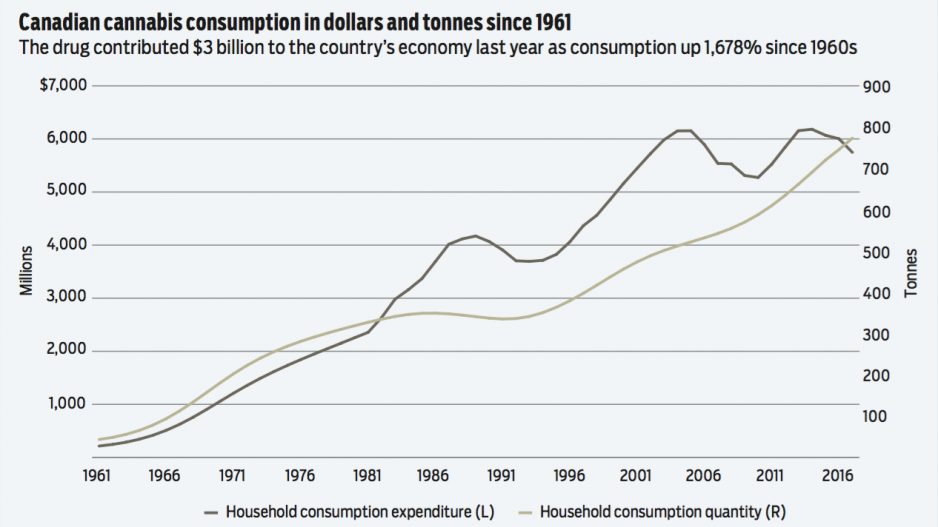it’s been 95 years since the act to Prohibit the improper use of opium and other Drugs added cannabis to the list of illegal drugs in canada. But that hasn’t stopped cannabis consumption in the country from increasing by 730 tonnes, or 1,678%, between 1961 to 2017.
last year alone, according to Statistics Canada data, canadians spent $5.75 billion to buy 773.3 tonnes of marijuana. cannabis contributed $3 billion to the canadian economy in 2017 and $33.9 billion over the past decade.
While raw consumption of cannabis is at an all-time high, canadian household spending on marijuana fell by $435.7 million (7%) from its 2014 peak of $6.18 billion.
The spending decrease results from falling cannabis prices across the country. Since 2014, the average per-gram price of marijuana has dropped 17.9%, from $9.06 to $7.43 per gram in 2017. The largest drop in cannabis prices was reported in manitoba: down 33% to $6.65 per gram in 2017 from $9.92 per gram in 2014.
Cannabis prices in British columbia fell less than the national average, dropping only 10.7%; however, in 2014 the province had the lowest price across the country at $7.77 per gram.
In 2017 the average per-gram price for cannabis in B.c. was $6.94. But manitoba was home to the country’s cheapest cannabis: $6.65.
At an average $9.52 per gram, canada’s three territories share the most expensive marijuana, followed by new Brunswick ($8.05).One of the most notable changes in canada’s cannabis buying is its role in the global market. Since 1961, canada moved from a net importer of marijuana to a net exporter.
In 1961, illegal sales of marijuana abroad constituted only 2% of illegal purchases from abroad and only 1.3% of domestic production. last year, illegal sales of canadian marijuana abroad dwarfed illegal purchases almost four to one and accounted for 24.7% of domestic production.




